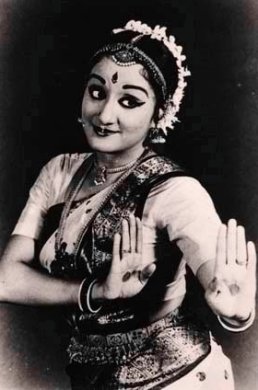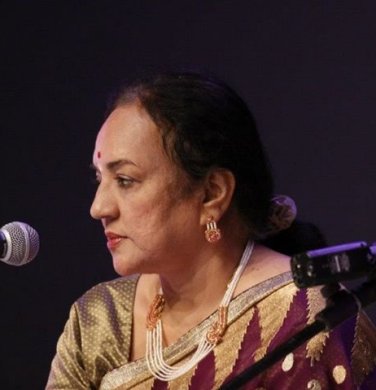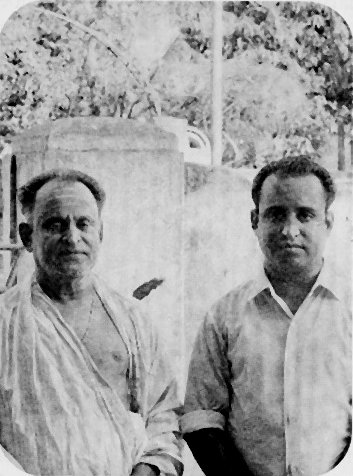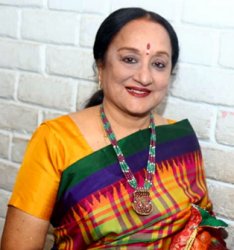
|   |

|   |
Songs I danced to and dances that sang to me January 26, 2015  Lakshmi Vishwanathan ; Photo: Kishore Parekh I have always loved every piece of music I have danced to. This is also because from my early student years I chose the varnams and other items my gurus taught me. When I started with Guru Ellappa, I learnt what I wanted to learn and as luck would have it, he also enjoyed teaching them to me because he was rather pleased that I could sing, and also appreciate his inimitable singing. Those were the years of my maturing as a performing artiste. The sheer joy of dancing a great repertoire enthused me enough to just do it without any set motive of a profitable career.  Charumathi Ramachandran The Useni Swarajathi with a complex footwork pattern in the charanam comprising of the seven talas was my first work with Ellappa. With my sister Charu's sweet singing, my performance of this great composition became impressive enough for sabhas like Krishna Gana Sabha and Yagnaraman to invite me to perform almost immediately thereafter. I always took the varnam seriously but learnt not to dance the piece in too slow a tempo. That is Ellappa's style. He conducted the recital always at a brisk pace. Mohamana in Bhairavi raga, Dhanike in Todi raga, Sami ni rammanave in Kamas, all became the sparkling core of my repertoire in a very short time. The singing by Charu of these pieces was the envy of every dancer who was interested in the classical repertoire. People who knew the intricacies of music and dance and their magical harmony in Bharatanatyam often remarked, "We did not know whether to see the dance or hear Charu's singing." I think what they meant was that they appreciated both. I took it all as a compliment, and in my stride. Then came a masterpiece which Ellappa taught me: the Ada tala, Bhairavi varnam Viriboni. The way the dance was composed, including the tisra nadai of the charanam, was so delightful that I enjoyed dancing it and received a lot of appreciation. The important thing I wish to recall is the fact that I danced effortlessly and made even the most complex parts look easy. I also revived the old Navaragamalika Varnam which Sankari had taught me in the style of guru Kittappa. At a performance in the Music Academy with Charu's bright idea, I repeated the Chittaswaram in tisra nadai. When this was noticed and complimented by Vidwan D.K. Jayaraman, I felt very pleased that a connoisseur appreciated this nuanced nrtta. In my early performances, great vidwans were always in the audience. I think that they were interested in seeing this combination of music and dance, Charu and myself, and felt it was a special treat! And they were always generous in their praise. I recall M.L.V, D.K. Jayaraman, K.V. Narayanaswamy, Balamuralikrishna, Maharajapuram Santhanam, and other vidwans attending my performances at different times.  Guru Ellappa and son Gnanasundaram MLV was of course "family," being Charu's guru. She delighted all with her speech to felicitate me on the occasion of my receiving the Nritya Choodamani title in Krishna Gana Sabha. About that event later! D.K.J was also close to my family and a guru of Charu's. K.V.N knew the dance of Balasaraswati! At the peak of his career, Santhanam, also close to my family because of his father Maharajapuram Viswanatha Iyer's friendship with my grandparents in Thanjavur, came to see my dance feature Tyagaraja Ramayanam. I had hardly exchanged a few words with him before this event. And received a surprise call from him the next day when he reviewed the entire show for about half an hour! The one thing he said which stays in my mind, "Those songs will never again be the same for me." Such was his genuine appreciation! I think the appreciation of high aesthetes always mattered the most to me. At one of my demonstrations in the Music Academy, I did sanchari for the phrase "Ajanu Bahu" from the Madhyamavathi Kriti of Tyagaraja "Nadu Pai belikeru". The idea for this elaboration came from my brother Balu. He was an aesthete par excellence and I relied on his suggestions and valued his approval. At the end of this demonstration, K Chandrasekaran, a Vice President of the Academy, was asked by the secretary TS Parthasarathy, to make his expert's comments. Chandrasekaran spoke in his usual knowledgeable vein. What I remember are a few words......"it was worthy of a Bala!" Coming from him, a true fan of Balasaraswathi, one can assume it was a high accolade! Many people thought perhaps I had learnt from her. They did not realize that my influence was from Ellappa, who had in fact conducted her performances for many years. And my dance moves were a carefully crafted original technique evolved by me to harmonize with the music I chose. Guru Ellappa's repertoire was special. He had worked with Kandappa Pillai, the guru of Balasaraswati, and had mastered that Tanjore style. Looking back I think my trips crossing a railway gate to West Mambalam to his modest house to learn were worth every bit of trouble. He taught me alarippus in all the nadais accompanied by suitable Thiruppugazh songs in the same rhythm. Jathiswarams too were plenty, including his own compositions. This dance number was and still is such a beauty in showcasing the essential Bharatanatayam nrtta. The ragas of the old Jathiswarams are Kalyani, Todi, Vasantha, Hemavathi, Poorvikalyani, Chakravaham, Hindolam, Saraswathi......to name the ones I learnt. They are so valid as worthy items today. They also had certain movements not found in the rest of the repertoire, such as lateral moves, with the typical shoulder push with an outstretched arm, and going upstage and backstage with different movements and poses. The charm and uncluttered choreography of Jathiswarams is unbeatable even today. Then the Sabdams... always in Ragamalika and beginning usually with Kambodhi. Little stories for little girls to tell....that is how I viewed the Sabdams. They are indeed simple episodes about Muruga or Krishna meant for children to get a feel for abhinaya. Of course Padams in Telugu and Tamil were carefully chosen to suit each phase of the learner's maturity. Guru Ellappa liked to teach his own Thillanas. And then the Kanada raga Gowri Nayaka. Viruthams and slokas too were in my repertoire. My maturing as an artist was under the inspiring Ellappa. It was not an arduous task. It was an easy and enjoyable exercise because I sailed with the wind as it were, and like fresh sea breeze, every dance I learnt put new energy in me both physically and psychologically. A profundity entered my dance. I just danced.  Lakshmi Vishwanathan, a prime disciple of Guru Kanjeevaram Elappa Pillai, is an exponent of the Thanjavur style of Bharatanatyam. She is also a trained vocalist. She is the author of several acclaimed books: Bharatanatyam - the Tamil Heritage, Kunjamma - Ode to a Nightingale, Kapaleeswara Temple, Women of Pride -The Devadasi Heritage. Her film 'The Poetry of Dance' was commissioned by the Festival of India. The Mamallapuram Dance Festival started in 1991 was Lakshmi's brainchild. She has served on several arts committees. She has served as Vice President of Music Academy (Chennai) and is a member of South Zone Cultural Centre.  Comments It is a lovely, sincere and fitting tribute and gratitude to her Guru and the elite audience mentioned. It also reminds me of the repertoire of those days. - Chandra Anand chandra6267@yahoo.co.in (Feb 21, 2015) Post your comments Pl provide your name and email id along with your comment. All appropriate comments posted with name and email id in the blog will also be featured in the site. |